Phenom II Value
It has been quite a while coming, but AMD fans can once again put together a capable value priced and very competitive computer with screaming overclocking capabilities with Phenom II. There are two apparent CPU candidates for the Phenom II value system. The obvious choice might appear to be the 810 or 920, but the new 720BE has many charms at a lower price. Reality also sets in when you see the Phenom II 940, which was introduced in January for $275, now selling at some etailers for as little as $170. For those reasons we chose the unlocked AM3 720BE for a DDR3 value system, and the unlocked AM2+ 940BE - at closeout pricing - for a DDR2 value system.
As discussed in many overclocking articles here, there are normally two types of overclockers. First are those who overclock for value, which are those that select cheaper parts rated at lower specs for their ability to overclock to much higher performance levels. The other group consists of overclockers trying to reach the highest overclock possible, who usually choose the highest priced and higher-performance parts to overclock even further. This last group should likely look to the 955BE in the Phenom II performance system on the next page. That system is built around the new 3.2GHz Phenom II 955BE, which distinguished itself as the best overclocker from AMD we have ever tested.
The choice of the $145 Phenom X3 720BE for the value DDR3 system pushes our perspective on other parts toward the value side of the overclocking equation. That means we have paired the 720 with a new DDR3 $135 motherboard instead of the very best $200 ASUS M4A79 Deluxe. It also means we matched the Full HD monitor with a cheaper video card that can deliver performance as good as you will likely get on a 1920x1080 monitor. It makes little sense to suggest a higher performing video card or CF or SLI graphics system if you can only see the better performance on a 30" monitor that is not part of this system. The same thinking went into the 940BE DDR2 system, which is built around the close-out priced 940BE.
Generally, parts were selected because they are a good value that can become an even better value should you decide to overclock. Below are both DDR2 and DDR3 Phenom II systems. Most components are the same, but the CPU, motherboard, and of course memory do differ between the two value builds.
| Phenom II DDR3 Value PC | ||
| Hardware | Component | Price |
| Processor | AMD Phenom II X3 720BE (2.8GHz x3, 3x512KB L2, 6MB L3 Cache 95W) |
$139 |
| Cooling | Xigmatek Dark Knight-S1283V, 120mm Long Life Bearing CPU Cooler - Retail | $40 |
| Video | Sapphire 100245HDMI Radeon HD 4850 512MB ($120 less $20 Rebate) | $100 |
| Motherboard | ASUS M4A78T-E | $140 |
| Memory | OCZ Extreme Edition 4GB (2x2GB) DDR3-1600 (PC3 12800) OCZ3X16004GK 7-7-7 ($83 less $30 Rebate) | $53 |
| Hard Drive | Seagate Barracuda 7200.11 ST31000333AS 1TB | $85 |
| Optical Drive | LG BD/HD DVD / 16x DVD+/- RW GGC-H20L - Retail | $109 |
| Audio | On-Board Audio | - |
| Case | COOLER MASTER Centurion 534 RC-534-SKN2-GP Black/Silver Aluminum & Mesh Bezel ATX Mid Tower | $50 |
| Power Supply | BFG Tech LS SERIES LS-550 550W Continuous@40C SLI Certified CrossFire Ready 80 PLUS Certified ($20 Rebate) | $60 |
| Base System Total | $776 | |
| Display | Acer X2333Hbid Black 23" 5ms HDMI Full 1080P Widescreen LCD Monitor (1920x1080) | $190 |
| Speakers | Logitech X-540 70W 5.1 Speaker System | $79 |
| Keyboard | Logitech G11 USB Gaming Keyboard | $59 |
| Mouse | Logitech MX518 8-Button/1 Wheel USB 1800dpi Laser Mouse | $40 |
| Operating System | Microsoft Vista Home Premium OEM | $99 |
| Complete System Bottom Line | $1243 | |
With the careful selection of components, there is no real penalty in choosing DDR3 for your Phenom II OC system. If fact the choice of the cheaper 720BE CPU for the DDR3 offsets the slightly higher cost of DDR3 memory. As a result, the DDR3 build is about the same cost as the DDR2 value build. Of course, you also give up one CPU core and 200MHz stock clock speed.
Some may already have very good DDR2, and they may prefer a mature DDR2 board. Below are the component selections for a Phenom II DDR2 OC system. The closeout pricing of the DDR2-only 940BE also makes building a DDR2 Phenom II very tempting as long as those cheaper 940BE processors remain in the market.
| Phenom II DDR2 Value PC | ||
| Hardware | Component | Price |
| Processor | AMD Phenom II X4 940 BE (3.0GHz x4, 4x512KB L2, 6MB L3 Cache) |
$170 |
| Cooling | Xigmatek Dark Knight-S1283V, 120mm Long Life Bearing CPU Cooler - Retail | $40 |
| Video | Sapphire 100245HDMI Radeon HD 4850 512MB ($120 less $20 Rebate) | $100 |
| Motherboard | Gigabyte GA-MA790GP-UD4H | $129 |
| Memory | Corsair DDR2-1066 4GB Kit TWIN2X4096-8500C5 5-5-5-15 ($64 less $30 Rebate) | $34 |
| Hard Drive | Seagate Barracuda 7200.11 ST31000333AS 1TB | $85 |
| Optical Drive | LG BD/HD DVD / 16x DVD+/- RW GGC-H20L - Retail | $109 |
| Audio | On-Board Audio | - |
| Case | COOLER MASTER Centurion 534 RC-534-SKN2-GP Black/Silver Aluminum and Mesh Bezel ATX Mid Tower | $50 |
| Power Supply | BFG Tech LS SERIES LS-550 550W Continuous@40C SLI Certified CrossFire Ready 80 PLUS Certified ($20 Rebate) | $60 |
| Base System Total | $777 | |
| Display | Acer X2333Hbid Black 23" 5ms HDMI Full 1080P Widescreen LCD Monitor (1920x1080) | $190 |
| Speakers | Logitech X-540 70W 5.1 Speaker System | $79 |
| Keyboard | Logitech G11 USB Gaming Keyboard | $59 |
| Mouse | Logitech MX518 8-Button/1 Wheel USB 1800dpi Laser Mouse | $40 |
| Operating System | Microsoft Vista Home Premium OEM | $99 |
| Complete System Bottom Line | $1244 | |
The ASUS DDR3 motherboard is very cost effective, and the DDR3-1800 memory costs all but the same as the DDR2-1066 selected for the DDR2 value system. The ASUS M4A78T-E has proved to be a very capable overclocker with the latest BIOS. In the lab, 3.9GHz was easily reached with the Phenom II 720BE processor. That is as good as we have achieved with the best Phenom II DDR2 motherboards. You may squeeze a bit more from our top overclocking ASUS M4A79 Deluxe, but at a cost of $200 versus $140 for the ASUS M4A78T-E you have to ask whether the cost justifies the possibility of overclocking a bit beyond 3.9GHz.
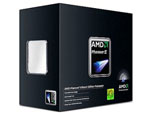 |
As shown in the Phenom II X4 810 and X3 720 launch review, the new 720BE is something of a value builder's dream. For just $139 you get an unlocked multiplier, three cores each with 512KB of L2 cache, and the same 6MB L3 cache used in the X4 Phenom II processors. Rated speed is 2.8GHz, which basically makes this an unlocked 920 with a disabled core. In bench testing we easily reached 3.8GHz, about the same as the most expensive first generation Phenom II, and you will only miss that fourth core in a few applications that actually take advantage of parallel processing. On the whole the 720BE is a dream of a value CPU, and you will likely see even further improvement in performance capabilities as the latest AMD Phenom II cores migrate to the 720BE in the future..
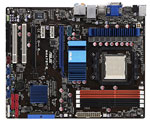 |
We've paired the Phenom II 720BE with an AMD DDR3 motherboard that emerged as a fast and stable computing tool in our test labs. With the latest BIOS, the ASUS M4A78T-E is very stable at standard speeds and a prolific overclocker with good quality DDR3 memory. This is quite an accomplishment for a new technology motherboard that sells for just $135. The socket AM3 790GX M4A78T-E easily reached 3.9GHz in our testing with the Phenom II 720 and quality DDR3 memory.
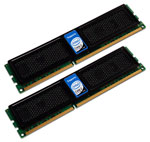 |
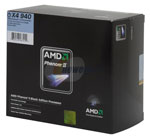 |
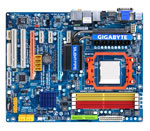 |
The DDR2 version of the Phenom II value system combines the 940BE with the well-regarded Gigabyte GA-MA790GP-UD4H at $129. This Gigabyte is one of the best overclocking boards in this price range. The $200 ASUS M4A79 Deluxe is a slightly better overclocker but you will pay a good deal for the small increase in OC ability. Those who want the very best overclocker to combine with their bargain 940BE, however, will not be disappointed in the abilities of the ASUS M4A79 Deluxe.
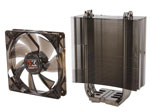 |
While the stock AMD cooler is adequate for normal cooling and modestly overclocking a Phenom II, better cooling is needed to push the CPU to its limits. The Xigmatek Dark Knight-S1283V cooler did very well in the lab and it is a good match to the Phenom II 720BE or the 940BE at a price that won't break the bank. You also will not need to remove the motherboard to attach the Dark Knight since it uses a push clip to mount to the existing AM2/AM2+/AM3 CPU cage.
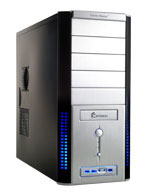 |
The Cooler Master Centurion 534 is a good value no matter how you look at it. It does come in different configurations, and the RC-534-SKN2-GP case is a good choice since it comes with three 120mm fans (front, side, and back) for cooling and installation requires no tools other than a screwdriver for mounting the motherboard. There are also plenty of drive bay options with five external 5.25" bays, one external 3.5", and four internal 3.5". Front USB/Firewire/Audio connectors are also featured. Builders report smooth edges and no sharp pieces to cut your hand during assembly. Even the expansion slots are screwless in this design. Our selection at $50 is black with a brushed aluminum and mesh front, but the case is also available in all black if you prefer.
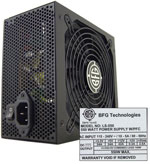 |
The power supply for the Phenom II OC system is the winner of the recent 500W to 550W roundup. The BFG Tech LS-550 grabbed our Gold Editors' Choice in the roundup for its great balance of performance. The BFG delivered good performance in every aspect, with tight voltage regulation and ripple well within specifications. Efficiency was through the roof, with 86% efficiency at 20% load. It also generated the highest maximum efficiency of 88% on 230VAC and 86% on 120VAC. With a good selection of connectors and reasonable cable lengths, the LS-550 is a great PSU for a value-oriented overclocking system.
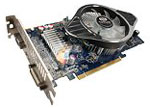 |
We have paired the Sapphire Radeon HD 4850 512MB video card with both Phenom II Value systems. As pointed out in the Multi-GPU Update, the 4850 is one of the best values in resolutions up to 1920x1080. At the value price of just $100 after a $20 rebate the Sapphire 4850 is the best price we have even seen for a name brand 4850. It was hard to resist, particularly when you consider that Sapphire is the major AMD/ATI video card manufacturer. If you want more performance, add a second 4850 in CrossFire mode and you can even drive a 30" monitor very adequately for gaming. For a total investment of just $200 the 4850 CrossFire will provide performance for the price that nothing else can really touch. That is a very good match to the goals of a Phenom II value system.
 |
The hard drive used in the Phenom II value systems is the Seagate Barracuda 1TB (1000GB) with true 7200RPM speed, 32MB cache, and 3-year warranty. The Seagate is an outstanding value in 1TB drives at just $85. Early 1.5TB and 1TB Seagate drives did have issues, but the latest firmware has been trouble-free. Still the early problems have forced Seagate to go for a lower price to attract market share, and $85 for a 1TB hard drive from a major manufacturer is a superb value.
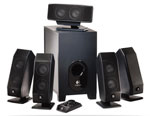 |
The Logitech X-540 has been a perennial favorite of users as a reasonably priced but good performing powered 5.1 computer speaker system. It will certainly not challenge the performance of a separate Dolby amplifier powering audiophile speakers, but it will provide surprisingly good sound for the price.
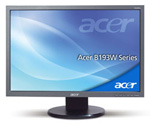 |
The last major component to discuss is the display, and here the tilt was toward best value at 1080p Full HD (1920x1080) resolution with the Acer 23" LCD. The resolution is the same 1920x1080 chosen for the budget Phenom II system, but the screen is larger and easier on the eyes for just $10 more. The monitor should be considered a nominal 24" in the new trend toward accurately describing monitor sizes in specifications.
The last area to discuss is input devices, where we went with gamer value favorites in the Logitech G11 USB gaming keyboard and the MX518 8-button laser mouse. Both are very well regarded devices that fit well with the capabilities and concept of a Phenom II overclocking system. If gaming is not your goal you could easily move to the $16 Microsoft OEM keyboard and mouse used in the budget Phenom II build and reduce the complete system prices by $83. If you will use your Phenom II value system for graphics and photo editing but not gaming, you can also drop the G11/MX518 and select precision input devices that better fit your needs.










60 Comments
View All Comments
Proteusza - Tuesday, April 28, 2009 - link
Ha ha, since even the writer of the article questioned your integrity, I think its fair to say you are the greater troll than I.So wait... you are saying the benchmark doesnt count because its GPU bound, but you also say Phenom II is not a great gaming platform? Seems to me, that since the benchmark in question is of a GAME, that it kinda matters for determining how good it would be for gaming. And, as I said, you would be paying a few hundred dollars extra for 0.6FPS more. Now why would you do that? Nehalem may well overclock slightly better, but you said so yourself, its GPU bound, if the Phenom II gets to 3.8GHz and the Nehalem gets to 4.0GHz, its not gonna matter much.
Xeon and Opteron are enterprise CPUs you dolt, they require registered memory and special motherboards which are a lot more expensive. And the CPUs themselves are more expensive. Not a good gaming platform.
But really, what all of this shows is how pathetic you are, since even if AMD did release a CPU which beat Intel in every single way (and it has in the past, remember Athlon 64 vs Pentium D), you wouldnt buy it because you LOVE Intel. So I'm sure reading guides like this make you froth at the mouth, the idea that peope are buying AMD CPUs and not regretting it, but you know, thats your own fault.
tshen83 - Tuesday, April 28, 2009 - link
"Ha ha, since even the writer of the article questioned your integrity, I think its fair to say you are the greater troll than I."Only idiots let other people's opinions wash over your own thinking. Just because Jarred called me a troll doesn't mean he is right.
"So wait... you are saying the benchmark doesnt count because its GPU bound, but you also say Phenom II is not a great gaming platform? Seems to me, that since the benchmark in question is of a GAME, that it kinda matters for determining how good it would be for gaming. And, as I said, you would be paying a few hundred dollars extra for 0.6FPS more. Now why would you do that? Nehalem may well overclock slightly better, but you said so yourself, its GPU bound, if the Phenom II gets to 3.8GHz and the Nehalem gets to 4.0GHz, its not gonna matter much. "
Games are always GPU bound, and not well threaded enough. It would take a 7Ghz Phenom II to be comparable to i7 @4.0Ghz. Just because you can't tell a difference between two CPUs in some stupid games doesn't mean the two cpus are the same.
"Xeon and Opteron are enterprise CPUs you dolt, they require registered memory and special motherboards which are a lot more expensive. And the CPUs themselves are more expensive. Not a good gaming platform. "
Smart consumers are getting the enterprise features(IOAT, less power consumption, higher Tcase tolerance, more intel test validations) for free or cheaper even. There is not a single consumer CPU worth buying right now IMHO.
1. Nehalems don't need registered memory, only 2S Opterons do.(So get your facts straight before you badmouth me) 1S Opterons can use unbuffered DDR2 ECC ram also.
2.CPUs are often cheaper if you know which ones to buy: hint W3520 and E5504 and possibly E5520s. Those "server" CPUs are the best gaming platform money can buy right now. Only idiots would buy Phenoms because they think the naming must imply that the CPU is "Phenomenal" right? Did you know that all the good AMD CPUs ended up being Shanghai Opterons with synchronized integrated memory controller that scales linearly with CPU clock speed while consuming far less power? Phenoms are cheap because they are junk. Enterprise people won't buy Phenoms to power their workstations and servers, so the Dubai suckers ended up paying Anandtech to shove the Phenoms down idiots' throats, you know, people like you.
3. Dual Socket Nehalem boards can be found for about 230 now. Compared to $170 PhenomII class motherboards, it is not even close.
"But really, what all of this shows is how pathetic you are, since even if AMD did release a CPU which beat Intel in every single way (and it has in the past, remember Athlon 64 vs Pentium D), you wouldnt buy it because you LOVE Intel. So I'm sure reading guides like this make you froth at the mouth, the idea that peope are buying AMD CPUs and not regretting it, but you know, thats your own fault. "
Today's Intel isn't the Intel from PentiumD days. I had over 7 Athlon XP CPUs in my room during the PentiumD days, so please don't assume anything. I don't give a crap about Intel, and often critisize Intel's overpriced SSDs. Nehalems are hands down the best CPU since the Pentium Pros.
Last point: during an argument, don't start your offense or defense with the word "if", especially if the "if" is about "AMD release a CPU which beat Intel in every single way" It makes your whole statement false. Discreet Math 101.
JarredWalton - Saturday, April 25, 2009 - link
Not everyone needs even quad-core, let along quad-core plus Hyper-Threading. Spending $150+ to move from our performance (top-end) AMD Phenom II to a faster Core i7 920 is fine if you plan to do 3D rendering or video encoding, but most people won't notice the difference. We mentioned several times that i7 is the fastest current platform, but it's also the most expensive current platform.What is "inferior" about AMD Phenom II? Have you even used the platform, or are you looking at a few benchmarks and concluding it's "superior"? Or maybe that IN WIN PSU is "inferior"... tell me, who manufactures the IN WIN PSU? Most likely Enhance or Seasonic, given the look, and both are very good companies. IN WIN has been around a while, and that PSU launched at a price of over $200, so it's almost certainly a decent build, and an efficiency rating of over 80% gives you everything you need.
Your "dishonest" business claims are... well, I won't even bother responding to that. Basically, I'm with Wes: there's a lot of FUD being spread, with little to back it up. Who cares about Xeon processors when we're reviewing a consumer CPU? And on the server side, we've pretty clearly shown that AMD is hurting.
C'DaleRider - Sunday, April 26, 2009 - link
[quote]...tell me, who manufactures the IN WIN PSU? Most likely Enhance or Seasonic, given the look, and both are very good companies.[/quote]The proper answer is it a CWT PUC design, as attested to by JonnyGuru's test of the InWin Commander back in Jan. of this year.
Decent designed power supply, but has the usual CWT flaws...3.3V rail falls apart under high load, ripple/noise that increases to almost ATX spec limits under rated load, etc.
Not a bad supply but certainly not up to the standards of a good current designed Seasonic or Antec/Delta or Enermax build.
Summer - Sunday, April 26, 2009 - link
I would say that I'm an average consumer who uses the computer for web surfing, word processing, gaming, photoshopping and family video editing/encoding. From my experience, my 720x4 is already overkill compared to my dual core. I can't imagine the average user needing more than 4 cores for anything basic around the house. Even if the computer is for gaming, wouldn't the extra money be better used for a videocard?marraco - Friday, April 24, 2009 - link
I would like to see the gaming performance of the Phenom II 955BE + DDR2 + Radeon 4890 against the SAME price spent in i7.surely you need to downgrade video to stay on budget, so:
What is better: Phenom2 + 4890, or I7 + same budget video?
I bet on AMD!
MadMan007 - Saturday, April 25, 2009 - link
Obviously since in the real world game settings the video card determines the performance except in a very few games. Better video card = better gaming hasn't changed.DanStp1 - Friday, April 24, 2009 - link
I had an AM2 MB a couple of years ago, and I could not use all 4 memory slots with a big CPU cooler, like the ones in this article.Have the newer AM2 MB's been redesigned so that tall coolers clear all 4 memory slots?
If you have 4 slots but can not use them it limits the platform.
Thanks:)
icingdeath88 - Saturday, April 25, 2009 - link
This one is high enough off the motherboard that it clears the ram. By quite a bit too. It's more to do with the cooler design than the motherboard design, though. I would imagine that it might still have problems with ram with those big heatsinks or heatpipes on them.DanStp1 - Friday, April 24, 2009 - link
I have seen on other sites, that the southbridges on AMD chip sets, including the SB750, have poor SATA performance.Has AMD done anything to address this?
In particular I have read about ACHI issues, and NCQ problems.
Thanks:)